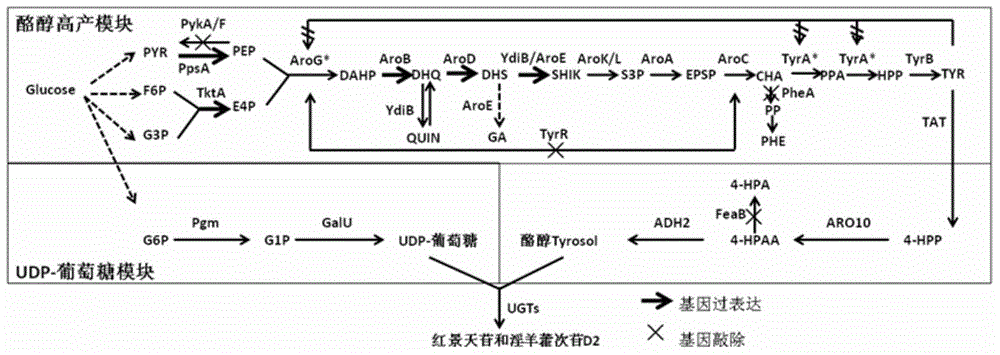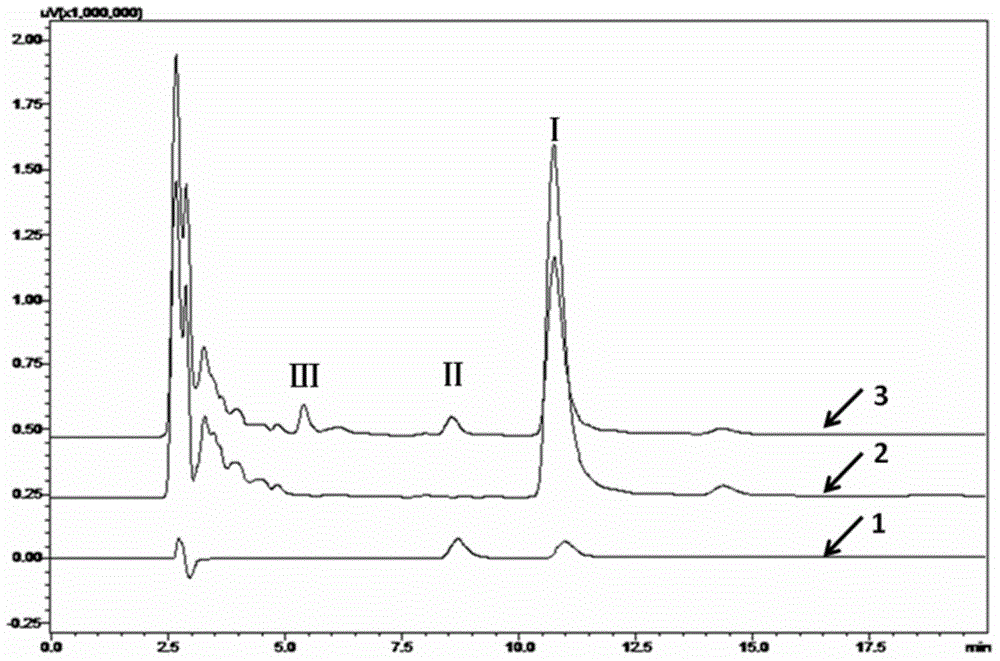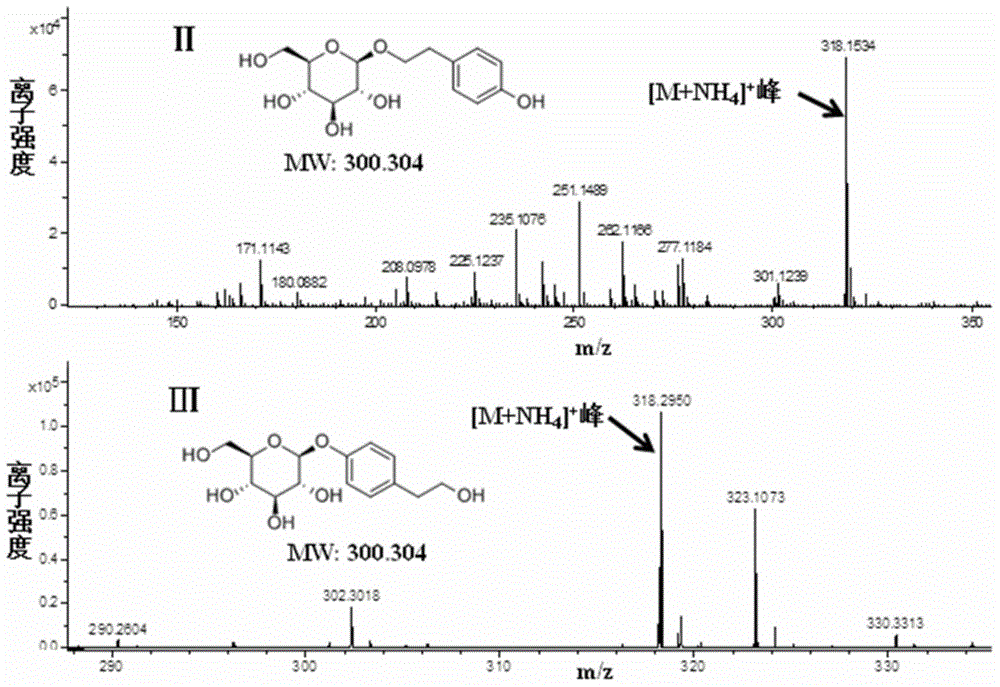Escherichia coli expression strain for high production of tyrosol and/or salidroside and icarisid D2 and application of escherichia coli expression strain
A technology of icariside and Escherichia coli, which is applied in the field of bioengineering, can solve the problems of low content and no reports of biosynthesis, and achieve the effects of easy fermentation and cultivation, important economic value and social benefits, and increased production
- Summary
- Abstract
- Description
- Claims
- Application Information
AI Technical Summary
Problems solved by technology
Method used
Image
Examples
preparation example Construction
[0036] (a) Guided by primers MCS-5FPBgl / MCS-3RPNhe, the plasmid pACYCDuet-1 was used as a template for PCR amplification reaction to obtain gene fragments with multiple cloning sites of BglⅡ, PstI, NotI, AflⅡ, PacI and NheI, The amplified product was digested with BglII and NheI and then ligated into the plasmid pBbA5c-MevT(CO)-MBIS digested with BglII and NheI to obtain the plasmid pBbA5c-MCS;
[0037] (b) Guided by the primers Ptet-tyrA-5FPPst / tyrA-3RPPst, the tyrA* gene with a point mutation shown in the nucleotide sequence SEQ ID No: 1 was used as a template for PCR amplification reaction to obtain a tet promoter The tyrA* gene fragment, the amplified product was digested with PstI and connected into the plasmid pBbA5c-MCS digested with PstI to obtain the plasmid pBbA5c-tyrA*;
[0038] (c) Guided by the primers aroG-5FPPst / aroG-3RPNot, the aroG* gene with a point mutation shown in the nucleotide sequence SEQ ID No: 2 is used as a template for PCR amplification reaction, an...
Embodiment 1
[0076] (1) Escherichia coli MG1655, plasmid pKD46 (temperature-sensitive type, containing exo, bet and gam genes regulated by the arabinose promoter, Amp r ), pKD4 (contains Kanna resistance gene with FRT sites at both ends, Kan r ), pCP20 (temperature-sensitive type, encoding FLP recombinase capable of recognizing FRT sites, Amp r ) are kept by our laboratory.
[0077] (2) Primers feaB-5FPL / feaB-3RPL are used to amplify the Kan gene in pKD4 to replace the feaB gene coding region; primers 1655GD-5FP / 1655GD-3RP are primers for identification of recombinant bacteria after feaB gene knockout, and the two primers are located in The left and right sides of the targeting sequence region. The PCR reaction system is: 5×PCR buffer, 10 μL; dNTP (2mM each), 5 μL; primers feaB-5FPL and feaB-3RPL (10 μM), each 2 μL; Phusion high-fidelity DNA polymerase (5U / μL), 0.5 μL; pKD4, 50ng;ddH 2O make up the system to 50 μL. The reaction program was: initial denaturation at 98°C for 30 sec; 30 ...
Embodiment 2
[0082] Plasmids pBbA5c-tyrA*-aroG*-ppsA-tktA-aroE-aroD-aroB and pTrc-ARO10 or pTrc-ARO10-UGT73B6 were transformed into E. coli strain ΔA by chemical transformation, and the transformation method was as follows: Put 100 μl competent E. coli strain △A cells on ice, add 2 μl plasmid pBbA5c-tyrA*-aroG*-ppsA-tktA-aroE-aroD-aroB and 1 μl plasmid pTrc-ARO10 or pTrc-ARO10-UGT73B6 after 10 minutes, lightly Mix lightly, place on ice for 30 minutes, heat shock at 42°C for 90 seconds, take it out and put it on ice for 2 minutes, add 600μl LB liquid medium, revive and culture at 37°C, 150rpm shaker for 30 minutes, and then spread the bacteria solution Spread on LB plates containing chloramphenicol and ampicillin. The transformed strains △A (ARO10) and (ARO10 and UGT73B6) carrying the two expression vectors were screened by resistance to chloramphenicol and ampicillin, and the plasmids were extracted for enzyme digestion verification to obtain E. coli expression strains for the high-product...
PUM
 Login to View More
Login to View More Abstract
Description
Claims
Application Information
 Login to View More
Login to View More - R&D
- Intellectual Property
- Life Sciences
- Materials
- Tech Scout
- Unparalleled Data Quality
- Higher Quality Content
- 60% Fewer Hallucinations
Browse by: Latest US Patents, China's latest patents, Technical Efficacy Thesaurus, Application Domain, Technology Topic, Popular Technical Reports.
© 2025 PatSnap. All rights reserved.Legal|Privacy policy|Modern Slavery Act Transparency Statement|Sitemap|About US| Contact US: help@patsnap.com



